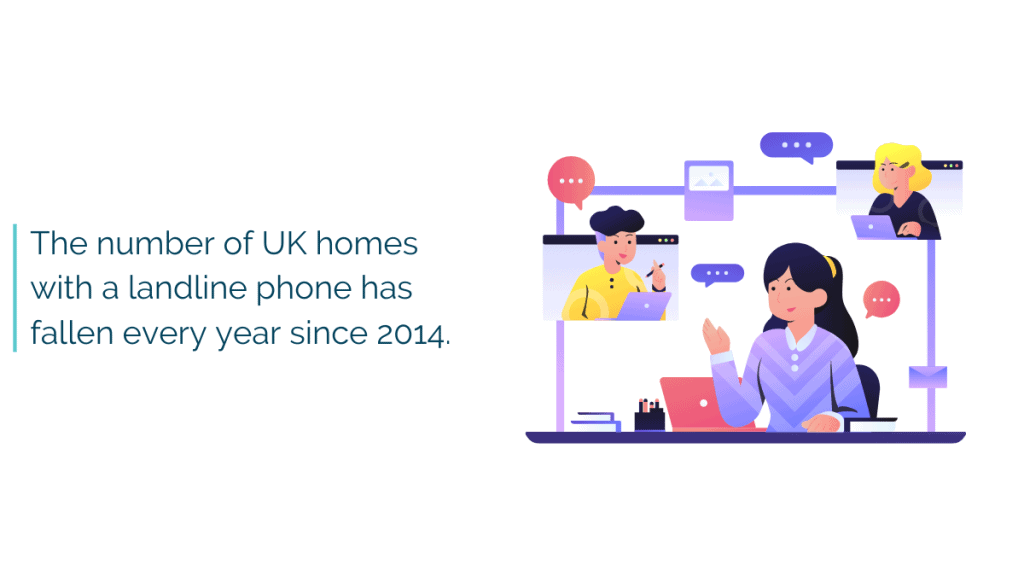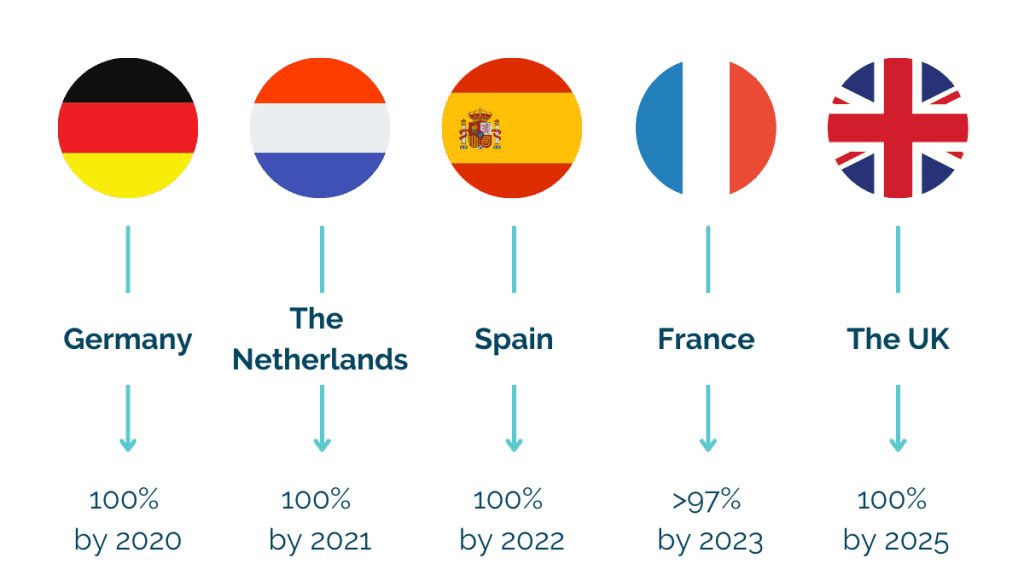In this post:
- What is PSTN?
- What is ISDN?
- Why are phone lines ‘going fibre’?
- What support is available for the switch?
- What are other countries doing?
- What improvements will this bring?
- Where to get started…
The clock is ticking. Openreach is turning off the UK’s PSTN and ISDN services in 2025, meaning contact centers have to switch to Internet Protocol (IP) solutions before then.
While it seems like a big deal, there’s no need to worry.
Take a deep breath…
Many businesses have already made the jump, and there’s still time to join them. When you do, you’ll get all the benefits of fast, modern connectivity.
What is PSTN?
The U.K.’s Public Switched Telephone Network (PSTN) is the copper phone line network that currently connects much of the country.
For over 100 years – with a few upgrades here and there – the network has done a great job of powering everything from phones and fax machines to payment terminals, CCTV, and alarms.
But in recent years reliance on the network has decreased. Businesses began to turn to VoIP phone systems for their communication needs.
Meanwhile, changing consumer habits saw landline use reduce drastically.

What is ISDN?
Integrated Services Digital Network (ISDN) is one of the digital standards that uses the PSTN network.
It allows businesses to connect to the internet on the same wires they use to make voice calls. These lines were widely used by contact centers because they allow multiple calls to take place on the same line at the same time.
BT first introduced ISDN lines in 1986. While much newer than the phone lines it operates on, it’s still an outdated protocol.
But these networks will soon be no more
In 2025, Openreach will turn off PSTN and ISDN in the U.K. From this moment on, all phone lines will be powered by IP.
The country’s fibre network will enable much of this change. The method of communication is a significant improvement on the old copper wires. It lets us transmit data at far faster speeds and is less expensive to maintain.
This means that even once PSTN is switched off, we’ll all still have access to a reliable communication network.
But isn’t fibre for broadband? What about phone calls?
Not to worry. We’ll still be able to call each other on our existing numbers. But instead of using the old lines, the calls will transmit via Internet Protocol (IP) technologies.
VoIP is a cloud-based solution. It powers many of the current methods for making calls online—you’ll have used it when making calls via Zoom, Skype, or FaceTime.
With the right software, you can even use it to make and receive regular phone calls.
The only difference is that the data transmission goes through your internet connection. This brings significant benefits, which we’ll explore later in this article.
Everybody will be affected, but support is available
There will be no more support for PSTN once the switch-off happens in the U.K. This means every person and business in the country will need to make the change.
But you won’t be left to do so on your own. Your provider will help with the switch, and they’ll direct you to a plan that doesn’t rely on the old copper wire network.
You don’t need to wait for the turnover to make the change.
Many parts of the country already have access to the new network. Switching early provides the opportunity to get ahead of the curve.
In fact, many contact centers already use VoIP. And there are solutions that enable businesses to operate using the newer technology.
Those that make the switch early can sit back and relax, knowing they won’t have to change again for years to come.
Are other countries doing the same?
The move away from PSTN is happening all over the world. France, Germany, Switzerland, and the U.S. have all begun the process of switching over.
In fact, many countries are far ahead of the U.K. when it comes to reducing their reliance on PSTN lines.

What improvements will the new network bring?
Put simply, the new network is built with the modern world in mind. When you connect, you’ll get faster data transfer speeds, reduced latency, and increased reliability.
As a result, it’s far better suited to modern means of communication like video calls, cloud connectivity, and always-on IoT devices.
Contact centers that switch to VoIP get significant benefits.
Outbound calls are far cheaper as they don’t go through a dedicated voice network. If you make international calls you’ll see even larger savings.
You also have more flexibility. As you don’t need a specific phone line, you and your staff can take calls from anywhere in the world. It’s a great way to operate a virtual call center.
VoIP can be configured via software. This gives access to many advanced features like integrations and automation.
For example, you can enable skills-based routing, powerful voicemail recording management, call forwarding, automated dialing, and more.
I’m sold, how do I get on board?
Now is a good time to think about your switch-over strategy if you haven’t done so already.
The first step is contacting your network operator to ask about how to make the change. They will provide you with further information about whether your area is ready to switch to the newer network.
Next, you need to identify which devices and systems in your business rely on the existing PSTN or ISDN phone lines.
Once you’ve identified these devices, you need to switch them over.
This may not be that difficult. Many modern devices work on both the older standards and IP. In these cases, adapting to IP may be as simple as flicking a switch.
When this isn’t the case, you have two options.
- Replace the devices with one that works on the IP network. Contact your provider to find out more about how to do this.
- Buy a converter that allows analog signals and digital signals to communicate.
Whichever option you choose, service providers are ready to help. The change should be completely seamless.
Time to modernize your contact center?
You still have around three years before the deadline. But now could still be a good opportunity to modernize your contact center and switch to a VoIP solution—getting all the benefits this brings.





